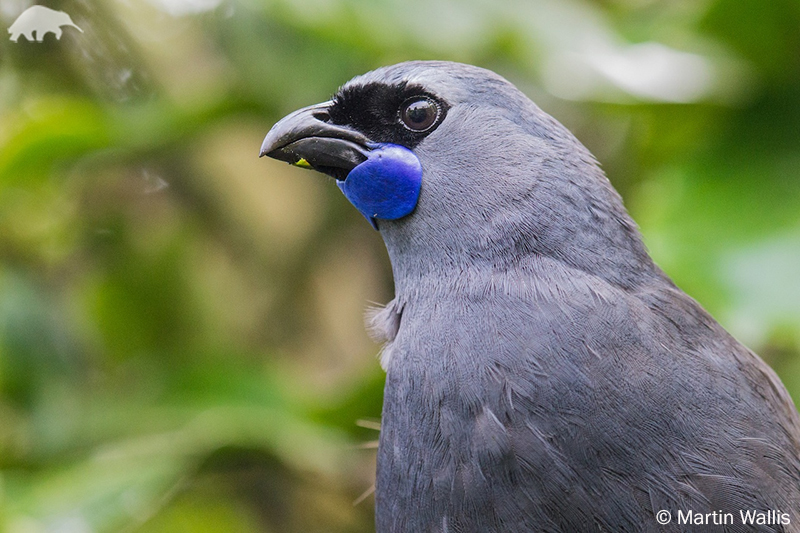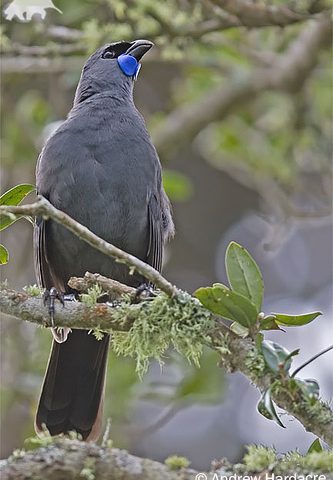About
The South Island kokako has not been seen since 2007, and may be already extinct.
Until relatively recently the two species that make up the genus Callaeas were considered as one species, the Kokako. The two species are superficially very similar, though the South Island kokako has distinctive large orange fleshy protrusions under its bill, called wattles, contrasting with the North Island kokako’s blue wattles. They belong to the small Callaetidae family, which is endemic to New Zealand and consists of two other species which are the only members of their genera.
Introduced pests such as ship rats and possums predate upon chicks and eggs, leading to nest failure and driving this species to the edge of existence. Introduced stoats also directly predate on adult kokakos, whereas goats and deer indirectly threaten the kokako by destroying their favoured understorey food plants. Much of the South Island kokako’s habitat has been cleared for logging, and for use as farmland .
- Order: Passeriformes
- Family: Callaeidae
- Population: <50
- Trend: decreasing
EDGE Score
Distribution
Endemic to New Zealand’s South Island, predominantly on the west coast.
Habitat and Ecology
This species inhabits mature hardwood forest, especially with diverse shrub and sub canopy species that supply fruit for breeding. They nest at all forest levels. With such short wings, the bird is not good at flying and prefers to use its long, powerful legs to bound across branches. They are omnivorous, eating fruits, leaves, flowers, moss, buds, nectar and invertebrates.

